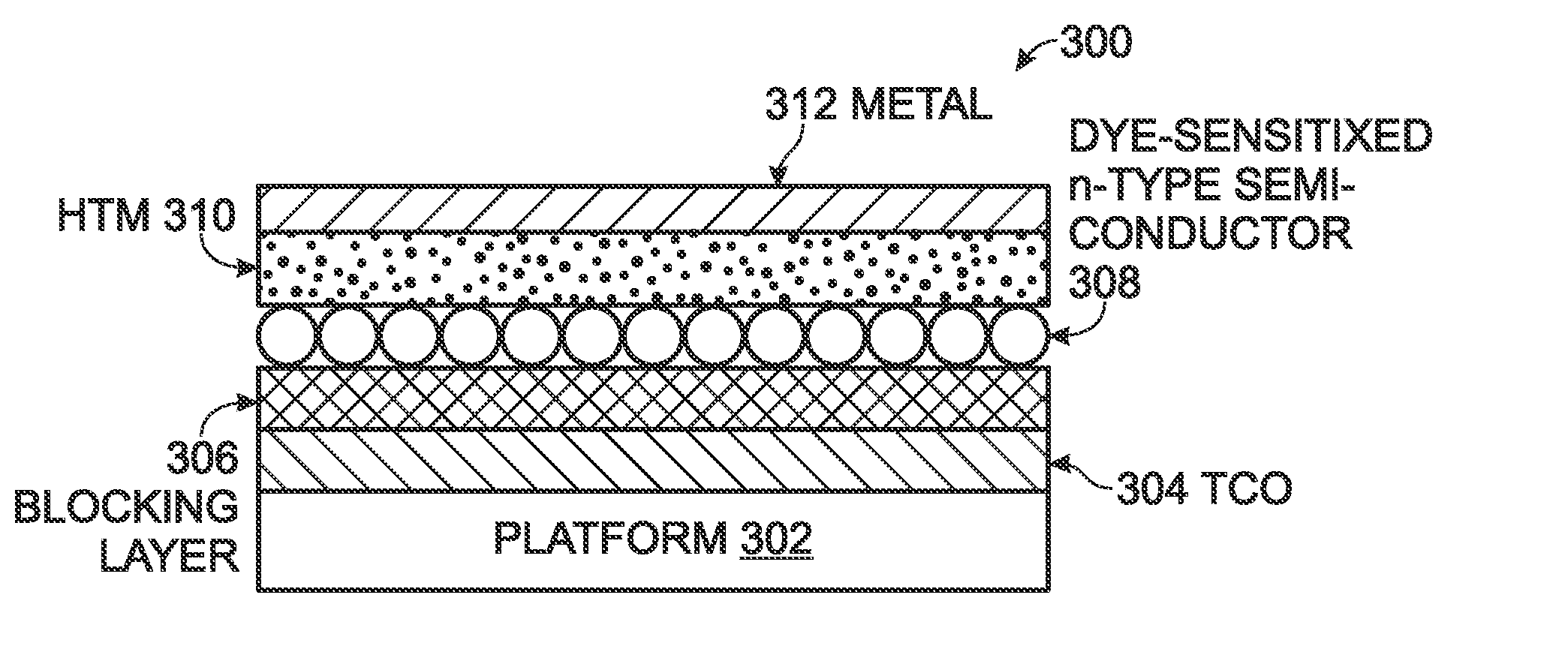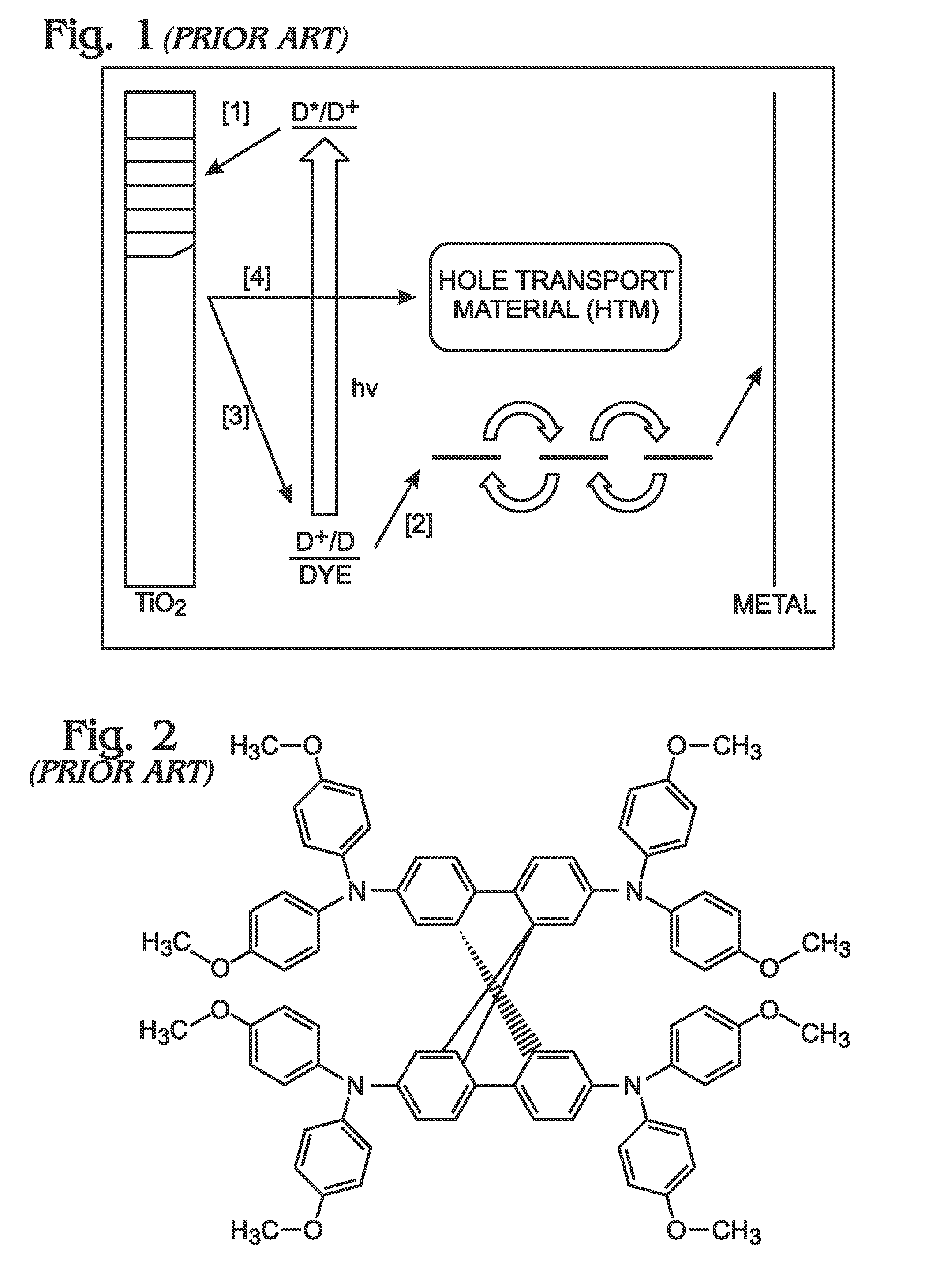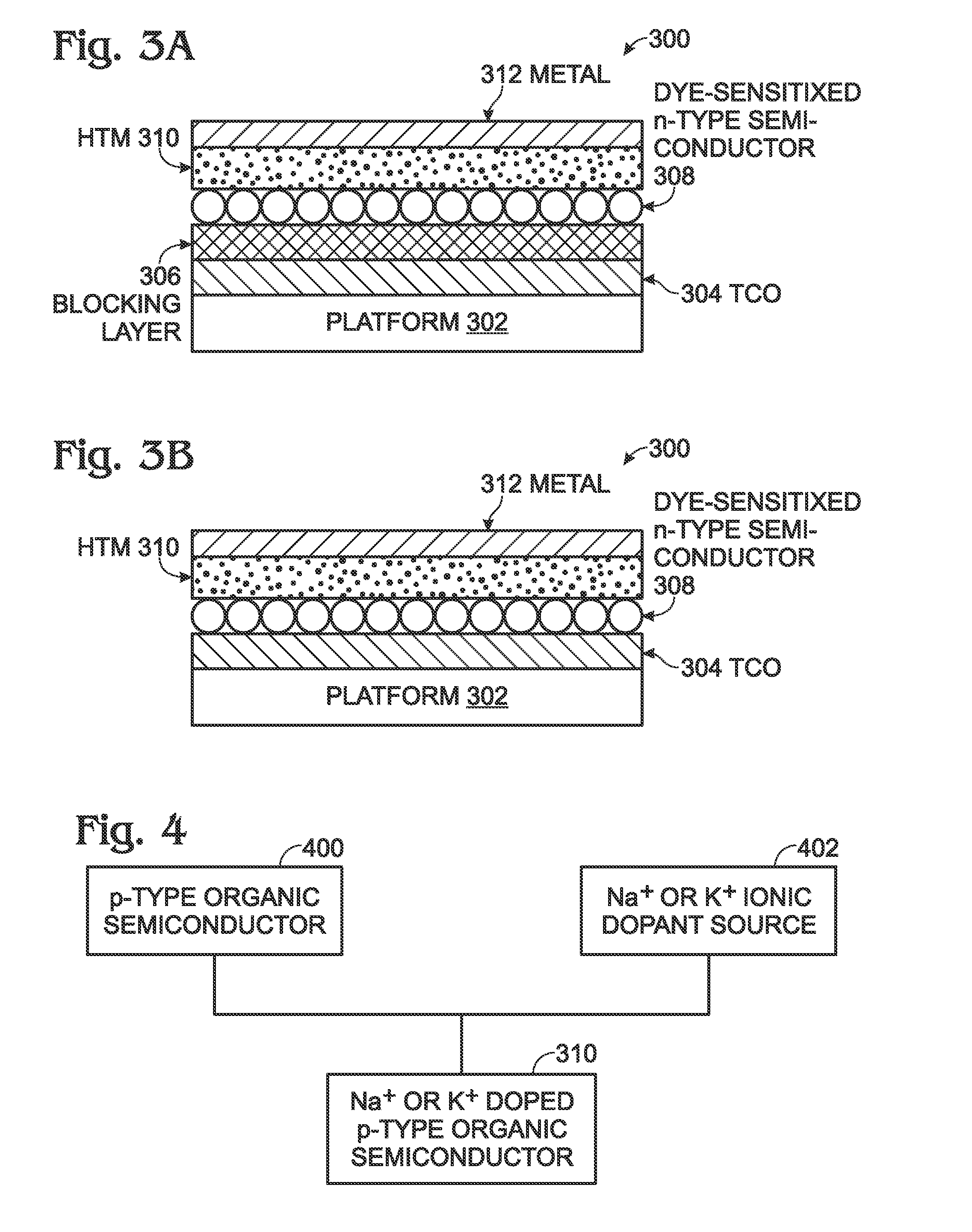Solid-State Dye-Sensitized Solar Cell Using Sodium or Potassium Ionic Dopant
a solar cell and sodium or potassium ionic dopant technology, applied in solid-state devices, electrolytic capacitors, material nanotechnology, etc., can solve the problems of low intrinsic conductivity of pristine spiro-ometad films, li+ does not provide access to higher oxidation states of spiro-ometad, and imposes challenges towards the realization of highly efficient ssdscs. achieve the effect of improving the performance of solid-sta
- Summary
- Abstract
- Description
- Claims
- Application Information
AI Technical Summary
Benefits of technology
Problems solved by technology
Method used
Image
Examples
Embodiment Construction
[0023]FIGS. 3A and 3B are partial cross-sectional views of an ssDSC with a solid-state hole transport material (ssHTM). The ssDSC 300 comprises a transparent platform 302, typically made from glass or flexible material. A transparent conducting oxide (TCO) 304 overlies the transparent platform 302. Some examples of a TCO material include fluorine doped tin oxide (FTO), doped zinc oxide (ZnO), and indium tin oxide (ITO). As shown in FIG. 3A, a blocking layer 306 overlies the TCO 304. The blocking layer 306 is electrically conductive, but prevents ohmic contact between the TCO and an ssHTM layer. A dye-sensitized n-type semiconductor 308 overlies the blocking layer 306. The ssHTM layer 310 overlies the dye-sensitized n-type semiconductor 308. A metal layer 312 overlies the ssHTM 310. For example, the metal may be Ag or Au. Alternatively, FIG. 3B depicts an ssDSC with no blocking layer.
[0024]Typically, the blocking layer consists of a thin layer of compact metal oxide. For example, the...
PUM
 Login to View More
Login to View More Abstract
Description
Claims
Application Information
 Login to View More
Login to View More - R&D
- Intellectual Property
- Life Sciences
- Materials
- Tech Scout
- Unparalleled Data Quality
- Higher Quality Content
- 60% Fewer Hallucinations
Browse by: Latest US Patents, China's latest patents, Technical Efficacy Thesaurus, Application Domain, Technology Topic, Popular Technical Reports.
© 2025 PatSnap. All rights reserved.Legal|Privacy policy|Modern Slavery Act Transparency Statement|Sitemap|About US| Contact US: help@patsnap.com



